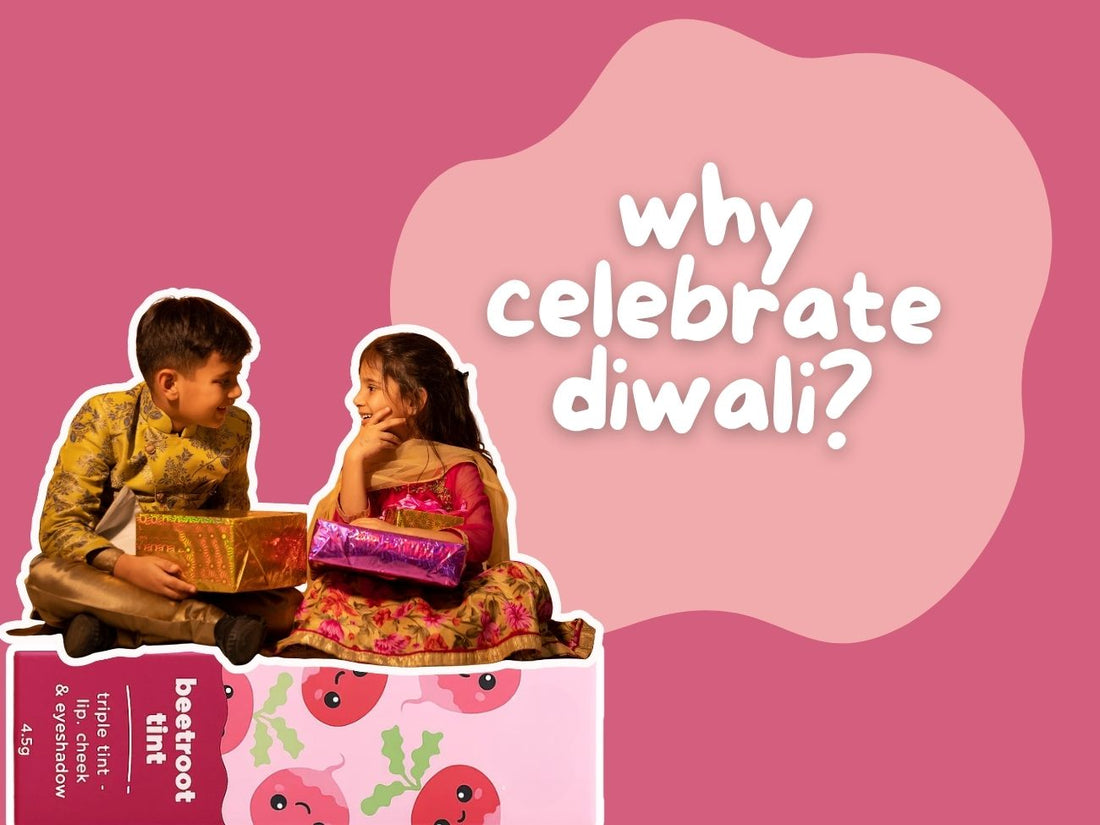
Why Do We Celebrate Diwali? Stories and Lessons for Kids
Share
Festivals are special times that bring families together, fill homes with joy, and give children a chance to learn about traditions. Among all the Indian festivals, Diwali is one of the most loved and celebrated. For kids, Diwali is all about lights, sweets, decorations, and fireworks. But beyond the fun and excitement, the festival carries deep meaning, values, and history.
So, why do we celebrate Diwali? Let’s explore the story, traditions, and lessons of Diwali in a way that kids can easily understand.
The Story Behind Diwali
There are many stories connected to Diwali, depending on the region of India. Each story shares a common theme: the victory of good over evil, light over darkness, and knowledge over ignorance.
1. The Return of Lord Rama
-
The most popular story comes from the Ramayana. After defeating the demon king Ravana, Lord Rama returned to Ayodhya with Sita and Lakshman after 14 years of exile.
- The people of Ayodhya lit rows of diyas (earthen lamps) to welcome them home, which is why Diwali is often called the Festival of Lights.
Rama the Brave Hero
Imagine Rama as the bravest superhero who always stands for truth and kindness. A great villain named Ravana caused a lot of trouble, and Rama faced him with courage and a loyal team. When Rama won, everyone in his city lit lamps to welcome him home, and the whole place shone like a victory parade. Diwali celebrates that return, a reminder that goodness and courage beat fear.
2. The Story of Goddess Lakshmi
-
In many regions, Diwali is also celebrated as the day Goddess Lakshmi, the goddess of wealth and prosperity, is worshipped.
- Families pray to her for happiness, good fortune, and blessings for the year ahead.
Lakshmi the Guardian of Homes
Now picture Lakshmi as a gentle guardian who brings comfort, kindness, and the things families need to be happy. On Diwali, families light lamps and tidy their homes to welcome Lakshmi, asking for well being and good fortune in the coming year. The lights, sweets, and togetherness are ways to say thank you for goodness and hope.
3. The Story of Lord Krishna
- In some traditions, Diwali marks Lord Krishna’s victory over the demon Narakasura. This story also represents the triumph of truth and goodness.
Krishna and the Fierce Demon Narakasura
Think of Krishna as a clever, playful hero who protects people every day. A scary demon named Narakasura was making life hard for many, stealing treasures and scaring families. Krishna went on a daring mission, rescued the captured people, and defeated Narakasura, bringing peace back to the land. People celebrated by lighting lamps and making the night bright, because peace and safety had returned.
By knowing these stories, children learn that Diwali is not just about fireworks and sweets; it’s about celebrating goodness, courage, and family togetherness. All these superhero stories share the same message, simple enough for kids to remember: light beats darkness, goodness beats fear, and helping others makes the world brighter.
Diwali celebrations often mean late nights, sweets, fireworks, and plenty of time spent outdoors. Between the smoke from crackers, dust from decorations, and meeting friends and family, children’s skin is exposed to more pollutants than usual. That’s why caring for their skin and hygiene after the festivities becomes so important.
Tuco Kids offers a safe and gentle range of bathing bars, lotions, and soothing gels crafted for delicate skin of children. With natural ingredients like oats, rice water, turmeric, and shea butter, Tuco products cleanse effectively without dryness, helping wash away pollutants, restore moisture, and keep kids’ skin soft and healthy through the festive season.
The Values Kids Can Learn from Diwali
Diwali is more than just a festival; it’s a celebration full of lessons children can carry through life.
-
Good Always Wins Over Evil – Every story of Diwali reminds kids to be honest, brave, and kind.
-
Light Over Darkness – Just like diyas brighten up the night, knowledge and kindness can brighten up our world.
-
Respect for Traditions – Celebrating festivals teaches kids to value culture and family rituals.
-
Sharing and Caring – Giving sweets, gifts, or even helping decorate teaches children the joy of giving.
- Cleanliness and Renewal – Cleaning homes for Diwali encourages the habit of hygiene and keeping surroundings neat.
The rows of glowing diyas, fairy lights, and candles symbolize hope and joy. For kids, it’s magical to see homes, streets, and even entire cities lit up in celebration. The lights remind us that even a small diya can remove darkness — just like small acts of kindness can bring happiness to others.
Fun Ways Kids Can Celebrate Diwali at Home
Parents can make Diwali more meaningful for kids with simple, creative activities:
1. Diyas, Rangoli & Home Decorations
Kids love painting diyas and creating colorful rangoli designs, while families clean and decorate their homes with lights, lanterns, and vibrant patterns to welcome positivity and joy.
2. Storytime & Worship
Parents can read simple versions of the Ramayana or Krishna’s stories to explain the meaning of Diwali, followed by prayers to Goddess Lakshmi and Lord Ganesha for wisdom, prosperity, and blessings.
3. Sweets, Gifts & Crafts
The excitement of making laddoos, burfis, or chocolates together adds to the fun. Children can also get creative with Diwali cards, paper lanterns, or decorating jars with fairy lights, while families exchange sweets and thoughtful gifts.
4. Fireworks, Music & Family Bonding
Whether it’s sparklers, eco-friendly firecrackers, or celebrating with music and dance, the highlight for kids is always the sparkle and joy. Most importantly, Diwali becomes a time for families to bond, share stories, and create lasting memories.
Keeping Diwali Safe and Healthy for Kids
Parents should also keep in mind some safety tips during Diwali celebrations:
-
Avoid crackers that make loud noises, as they can be harmful for kids and pets.
-
Keep a safe distance from fire or diyas to prevent burns.
-
Use eco-friendly decorations and lights.
-
Maintain a balance in sweet consumption to avoid tummy troubles.
- Ensure kids wash up properly after playing or helping with rangoli and colors.
Diwali is one of the brightest, happiest festivals of India, and it gives children more than just sweets and fun; it gives them life lessons, traditions, and memories that stay forever. For kids, the festival becomes extra special when parents take the time to explain the meaning behind the lights, stories, and prayers.
As families celebrate with joy and togetherness, let’s remind children that Diwali is about spreading love, kindness, and positivity and values that shine brighter than any firework.

